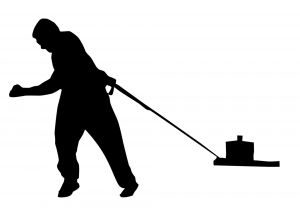Bass Groove – It Took Me Years To Realize One Thing
Groove – It’s THE most important aspect of what you do as a bass player. Sure, you might like shredding and playing a bunch of fancy stuff, but it’s your groove that will get you gigs consistently and make you the most popular person on the bandstand.
Most bass players just ‘play their part’ but never really get into the nitty-gritty details of what they’re doing – and the number one thing they don’t pay attention to is…
The Length Of Their Notes
This may not sound very important – they’re either long notes or short notes, big deal!
Damn straight it’s a big deal!!!
Can you imagine “Another One Bites The Dust” with all long notes? If not, try it. Don’t allow any space between the notes.
There’s no room for the bassline to ‘breathe’.
Or think about any walking bassline you’ve ever heard. Now imagine it with super short notes.
Better yet, try playing a walking bassline with super short notes. Once again…
It sounds awful!!!
Don’t make this mistake when you’re playing or creating your own bass lines.
There’s no hard and fast rule about the ratio of long notes to short notes, but just thinking about this stuff will put you in a true ‘bassist mindset’.
As a bassist, a bassist mindset is probably one of the most valuable things to have.
Bass Groove – Be Aware Of The Length Of Your Notes
Long notes feel like they drag behind
Short notes feel like they push forward
In general, long notes make your groove sound like it’s ‘relaxed’, ‘behind’ or ‘lazy’. By the way – these can all be good things as well as bad things depending on the groove.
On the flip side, short notes make your groove feel ‘exciting’, ‘ahead’, or ‘pushing’. These can also be good things as well as bad things depending on the groove.
Because of these two insights, you need to be aware of 2 other things:
- How Long Your Notes Are
- Where You’re Sitting In The Groove
It’s easy to play long notes and lay behind in the time. It’s also easy to play really short notes and push forward. That’s what those notes want to do by default.
The real challenge comes when you have to lay behind while playing short notes or push forward playing long notes.
This isn’t just about bass…this is all instruments in all kinds of music!

For example, whenever I teach students of mine about walking basslines – I tell them to make the notes as long as possible.
Most of them start dragging.
The longer they play their notes, the ‘draggier’ it gets – which is the exact opposite of how a walking bassline should feel.
Whenever I’m teaching something like “Another One Bites The Dust” my students almost always rush.

Partly because of the shortness of the notes and partly because of how much space there is between the notes.
Either way, it sounds bad!!! This is stuff we all struggle with as bass players.
The first step in fixing it is always AWARENESS!
How aware are you of the length of your notes?
Have you ever thought about it consciously?
Do you find yourself rushing on songs with lots of short notes?
Or dragging on songs with long notes?
How aware are you of the length of your notes?
Let me know by leaving a comment down below and don’t forget to sign up to the Become A Bassist Newsletter.
Cheers,




Luke,
I actually made the mistake of sustained notes where I should have been playing staccato just this morning and I didn’t even realize it until I read this. Thanks for the heads up. I won’t do that again!
Thanks!
Angela
P. S.
I just found your vid on YouTube last night. I’m already learning! Great website. Thanks for sharing your knowledge.
Great insight
that a nice way to put it mate!
great work on this website!
I’ve heard Victor Wooten talk about this, and he mentioned one great way to keep your timing is to always hear a the drummer in your head, whether he’s there or not.
In addition to that, before I start playing, I try to run through the line in my head, humming the notes at their proper length and time. I find it’s much easier to hum the line while snapping your fingers to the drum beats, because the timing goes into your subconscious.
Once you pick up the bass and start playing, try to think almost exclusively about the song and its beat, and not about what you’re playing with your fingers. I find concentrating on technique can be a huge rhythm killer.
Hope this was helpful, and thanks for writing about this, Luke. 😀
Hey Scott! I love Victor’s Groove Workshop DVD. So much wisdom condensed and explained with such clarity! And you’re totally right about focusing on technique being a groove killer. When I teach, I always try to get my students to make the technique side of things automatic and subconscious. That way, when it comes time to play, they can spend most of their mental ‘bandwidth’ on the important things, like serving the music.
What you say about humming the notes before you play is spot on too. If I’m ever struggling with a bassline, I’ll always stop, and sing it out loud – and hope nobody hears my singing voice! 😛 I know that if I can’t make it groove with just my voice, there’s very little chance of making it groove when I pick up my bass.
Thanks so much for the comment! It really is appreciated!